Tallinn (Estonia)
Cruise Port schedule, live map, terminals, news
Region
Baltic - Norwegian Fjords - Russia
Local Time
2026-01-15 22:18
 25°F
25°F -4°C

 Mod. breeze
Mod. breeze7.1 m/s
 27 °F / -2 °C
27 °F / -2 °C 19 °F / -7 °C
Port Tallinn cruise ship schedule shows timetable calendars of all arrival and departure dates by month. The port's schedule lists all ships (in links) with cruises going to or leaving from Tallinn, Estonia. To see the full itineraries (ports of call dates and arrival / departure times) and their lowest rates – just follow the corresponding ship-link.
| Day | Ship | Arrival | Departure |
|---|---|---|---|
| 24 March, 2026 Tuesday | 11:00 | 23:00 |
Tallinn (port locode EETLL) is a major Baltic port and Estonia's capital city, with population around 0,43 million (metro over 0,54 million). The distance to Helsinki (across the Gulf of Finland) is approx 85 km (53 mi). The city is among the most popular ports of call on Northern European cruise itineraries to ports in Scandinavia and Russia (St Petersburg).
Port Tallinn
Port's cruising season runs late April-early May through late October-early September. The average number of cruise ship calls per year is around 300. Tallinn Passenger Port is among the busiest Baltic cruise destinations and serves 0,5+ million cruise tourists annually. Since 2011, the port is also a turnaround destination (homeport) for cruise vessels leaving from Tallinn on roundtrip itineraries. The new service is via cooperation with the international airport Lennart Meri Tallinn Airport (Estonia's largest). The airport is located ~4 km / 2,5 mi from downtown.
Port Tallinn (officially Tallinna Sadam/locode EETLL) is Estonia's largest seaport in terms of both cargo and passenger (ferry and cruise) shipping traffic. The port authority is a state-owned company that manages all 5 ports:
- Old City Harbour ("Tallinn Passenger Port", in downtown) is the country's main passenger (cruise and ferry) port. Regularly scheduled ferries serve the ferry routes to Finland (Helsinki), Russia (Sankt-Petersburg) and Sweden (Stockholm).
- Muuga Harbour is the country's largest cargo port, located approx 13 km / 8 mi northeast from downtown.
- Paldiski South Harbour (in Paldiski) is a cargo port located approx 40 km / 25 mi west from downtown.
- Paljassaare Harbour (in Paljassaare) is a small cargo port located approx 5 km / 3 mi northwest of downtown.
- Tallinna Sadam port authority also manages the passenger port Saaremaa Harbour (in Ninase, Saaremaa Island - Estonia’s biggest island).
- Old City Marina (boat / yacht marina harbor) was opened in 2010 and is part of Tallinn Passenger Port (Old City Harbor).
In 2015, Tallinn Passenger Port served nearly 9,8 million passengers (cruise ship and ferry combined). In 2016, the port handled a total of 271 cruise ship calls and around 474,000 passengers. In 2017, the cruise port had scheduled 314 ship calls and handled over 0,5 million tourists. In 2018, the cruise port handled 341 ship calls and around 565,000 passengers - a record year based on pre-booked berths and estimated passenger numbers.
Since January 2018, all LNG-powered marine vessels (ships running on liquefied natural gas as primary fuel) receive a 4% tonnage fee discount when berthing in Port Tallinn. The LNG fuel doesn't produce any solid (soot) particles and sulfur (in comparison to diesel engines), while the levels of NOx and COx emissions are significantly lower (in comparison to natural gas).
In October 2018, the seaports Tallinn and Helsinki, together with the ferry companies Tallink, Viking Line and Eckero Line, received EUR 21,4 million as EU funding for passenger terminal and infrastructure developments (completed in 2021) as part of a TWIN-PORT project with total budget EUR 71,2 million.
In 2019-Q4, at West Harbour was completed a project to improve port's transportation infrastructure and reduce congestion, noise and air pollution. At the Old City Harbour was installed auto-mooring and shoreside power systems supplied by ABB. The ferry port also constructed sewerages (at all passenger ship quays) to expand its wastewater service. By 2020-H1, all ferry companies have to retrofit their Ro-Pax ships to be able to shut down their auxiliary engines while docked, resulting in quiet operations and zero pollution at berths.
- Port Tallinn contracted Elero AS (Tallinn-based company specializing in electrical works) to install the ABB's shorepower systems for 5x Old City Harbour piers (3, 5, 7, 12, 13). The remote-controlled crane for the pierside power connection was supplied by ScaleUp Group.
- The EUR 3,5 million project was co-funded by EU's "Twin-Port 3" (Tallinn, Helsinki, Stockholm) program.
Since January 2019, ships participating in Port Tallinn's ESI (Environmental Ship Index) initiative may apply for up to 8% tonnage fee discount. The new ESI pricing system involves differentiated port fees to encourage shipping companies to adopt environmentally friendly and sustainable technologies.
- Discounted port fees are based on ESI, which evaluates the emitted by the vessel air pollution (nitrogen oxide / NOx and sulfur oxide / SOx), its energy savings and capabilities for shore-power connection.
- Ships with ESI 80+ may apply for 8% discount on tonnage fees. Ships with ESI between 65-79,9 receive 3% discount.
- In 2014, Tallinn cruise port introduced differentiated port fees for passenger ships, when discounts were based on ship's waste. From 2018, all LNG-powered vessels receive 4% tonnage fee discount. Since 2019, their port fee discount will double if their ESI score is 80+. Another port initiative is not charging additional fees for scrubber waste disposal for passenger ships with modern scrubbers (reducing sulfur content in the emissions).
For season 2019 (April 27 through October 19), the port authority company Tallinna Sadam reported 339 scheduled cruise ship calls with expected ~600,000 passengers. The season's busiest ship day was July 11 (6 vessels with a total of 8000 pax). In 2018, Port Tallinn handled 338 ship calls and 635,000 cruise passengers.
In January 2020, the Port signed with YIT EESTI (Estonian design and construction company) an agreement for building the new cruise terminal in the Old Harbor. The project (valued ~EUR 13,7 million / ~USD 15,5 M) was completed in 2021 (the facility was opened on July 19). The new terminal (Tallinna Kruisiterminal) has a 3-story building, pier-side esplanade (850-m/2790-ft-long pedestrian promenade lined with plants), outdoor playground for kids (blue rubber play and exercise area), a restaurant (underneath the main seating stairs), car parking area. The facility is designed as multifunctional (doubling as event space during no-ship days and off-season).
Since April 2020, Port Tallinn is directly linked to the UK (Teesport England) with a weekly service (from Port Muuga) via Holland (Rotterdam). The new service is by Containerships Oy (1966-founded company, fully-owned subsidiary of CMA-CGM). Transhipment lines from Port Rotterdam additionally link to France, Benelux countries, Spain, Portugal, Canary Islands.
In June 2022, was approved an investment of EUR 53 million for building a new cargo terminal in Paldiski South Harbour. The project was co-financed by the EU's Commission (EUR 20M) through EstMilMob (multimodal military mobility project in Estonia that aimed to improve dual-use transport links to Tapa Sojavaelinnak/Tapa Army Base - the country's largest). Paldiski South Harbour Terminal (serving mainly cargo ships and car carriers/RoRo vessels) has one quay (length 300 m / 985 ft) and a hinterland area (10 hectares / 25 acres). The project was scheduled for completion in 2025-Q2.
In Tallinn is also based the company LTH-Baas SA (1934-founded) specializing in large marine projects, including outfitting projects for newbuild vessels, drydock refits and refurbishments, technical overhauls and ship repairs globally, sending specialists to leading cruise shipbuilding yards worldwide. Besides the main office in Estonia, LTH-Baas also has branch offices in Finland, Germany and France.
For 2024, Port Tallinn had scheduled a total of 100 cruise ship calls, up from 2023’s 90. The booked berthings listed 42 different vessels, including 10 making maiden/first-time visits.
Tallinn cruise terminal
Tallinn cruise port has been upgraded and expanded constantly to handle the increasing passenger (ferry and cruise) traffic. Cruise vessels use 2 docks - Old City Harbour (Tallinn Passenger Port) and Saaremaa Harbour. The port has all 4 passenger terminals A, B, D, and Old City Marina (former "Terminal C"). The 3 passenger terminals (A, B, D) have total berth length 4,2 km (2,6 mi).
In 2018 were approved plans for building a new cruise terminal, with scheduled completion by 2021 July. The facility doubles as an event venue. The new terminal was officially opened on January 30, 2022. Designed by Salto Architects, the facility can also operate off-season as it doubles as an event venue (max capacity 2000 seats) for hosting conferences and concerts. The contemporary design is marked by expansive decking, using Kebony-supplied sustainable wood, an 850-m-long esplanade/seaside promenade (connecting the port to the city's leisure areas) with tiered outdoor seating.
Currently, Old City Harbor has docking capacity 7 ships simultaneously. The port has 2 double-sided quays with total berthing capacity 4 large-sized vessels. Three other quays are located inside the harbor and are used by smaller boats.
The walking distance between the cruise terminal (Tallinn Passenger Port) and the Old Town is around 20-min. Shuttle bus service is operated between the terminal (both docking piers) and the city's Old Town. In the passenger terminal building, there is a tourist information booth. There is a taxi rank located in front the cruise terminal. Know that taxi prices are negotiable! A popular way to explore the city is the hop-on / hop-off bus tour.
Tallinn Passenger Port's second (new) cruise ship pier can accommodate even world's largest cruise vessels of Royal Caribbean's Oasis-class. Currently, the port can handle vessels with max LOA length 340 m (1115 ft), max-width 42 m (138 ft) and max-draft 11 m (36 ft).
Port's first (old) cruise pier has length 339 m (1112 ft). This quay was inaugurated in 2004 and was built exclusively for docking of cruise vessels. To cope with the increasing number of cruise ships (since 2011, when the turnaround port operations were started), the port authority started building a second quay in 2013 at the cost of EUR 9,34 million. The new pier (length 421 m / 1381 ft) is located next to the old quay.
(NEW) Tallinn Cruise Terminal (Tallinna Kruisiterminal)
In early-November 2019, Port Tallinn announced public procurement (by December 6, 2019) for the construction of a new cruise terminal facility in the Old City Harbour (adjacent to the current cruise berths).
The project (EUR 13,7 million / ~USD 15,5 million) also included the construction of an esplanade (pedestrian promenade), kids playground, car parking.
During no-ship days, the facility (with capacity ~2000 people) is used as a multifunctional/event space housing conferences, musical concerts, exhibitions.
The building's indoor area is sized ~4000 m2 (43050 ft2), including a cafe restaurant (underneath the main seating stairs).
- The building is partially powered by solar panels and heated by using a seawater-powered heating system.
- As main construction materials were used black-painted steel, natural concrete, glass, and heat-treated pine wood.
- The 900-m (2950-ft) long esplanade has a cycle road, pedestrian roads, green areas, open shelters, activity zones (for kids and outdoor sports). This scenic waterfront walkway directly connects the cruise port with the Old Town, as well as several leisure areas with food and beverage outlets.
Construction works officially started on April 30, 2020.
The new passenger terminal was completed and inaugurated on July 19, 2021.
Tallinn tours, shore excursions, hotels
City Tours and Shore Excursions
Kiek in de Kok: the translation of the name is “Peek into the Kitchen.” The cannon tower is 38 meters tall and its name came after a joke by Medieval guards who thought they would see trough the chimneys of the houses right into the kitchens.
Tallinn City Tour: the city tours are in double deck colorful buses. There is available audio in ten different languages. You can choose between three lines (blue, green and red) with different routes.
Estonian History Museum: located in the Great Guild Hall.
Oleviste Church and Tower: the St. Olav’s Church dates back to 13th century. It used to be the world’s tallest building for the period 1549 -1625. Its spire is 159 meters.
Estonian Maritime Museum: it is located in the Fat Margaret cannon tower. You can explore the maritime history of Estonia displayed over four floors.
Bastion Tunnels: it used to be a part of the tunnel system for defense. It was built during the Swedish rule, in the 1600s.
- Cruise Industry

Viking Line to establish a fully electric cruiseferry link Helsinki-Tallinn
Viking Line has revealed its intention to establish an emission-free ferry route across the Gulf of Finland, connecting Helsinki and Tallinn. Central...
June 6, 2025 - Cruise Industry
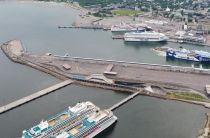
Port Tallinn (Estonia) expects 100 cruise calls in 2024 amid rising trends in sustainable tourism
Port Tallinn (Estonia) anticipates 100 cruise ship calls this year, up from last year’s 90, although the vessels are smaller, resulting in...
July 30, 2024 - Cruise Industry
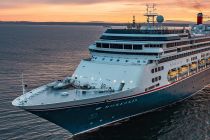
Fred. Olsen Cruise Lines returns to Dover for summer sailings
The UK-based Fred Olsen Cruise Lines is set to resume operations in Dover England, offering a series of summer cruises to various enticing...
January 30, 2024 - Cruise Industry
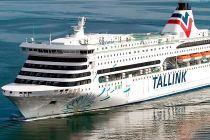
Tallink's ferry VICTORIA I to serve as second ship on the Tallinn-Stockholm route
Tallink has revealed its plans to deploy the VICTORIA I ferry as a supplementary vessel on the Tallinn-Stockholm (Estonia-Sweden) route during the...
January 28, 2024 - Cruise Industry
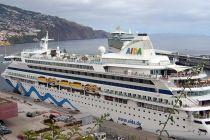
AIDAvita cruise ship named Blue Dream Melody amid ownership shift
The former AIDAvita ship (currently docked in Tallinn Estonia) has undergone a significant name change, marking a potential shift in ownership...
January 23, 2024 - Cruise Industry
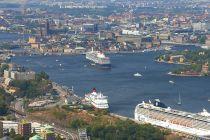
International cruise ship season kicks off at Ports of Stockholm (Sweden)
The international cruise season at Ports of Stockholm (Sweden) kicks off this weekend with the arrival of Fred Olsen's ship Bolette at Port Nynashamn...
April 15, 2023 - Cruise Industry
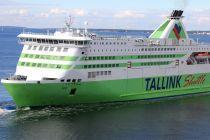
Tallink Star ferry to be chartered by Irish Ferries starting May 2023
In June 2023, Irish Continental Group, a company that owns Irish Ferries, and also car carriers/Ro-Ro ships, and containerships, will deploy its...
April 10, 2023 - Cruise Industry
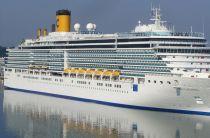
Costa Cruises opens bookings for 2024 itineraries in the Mediterranean and Northern Europe
Costa Cruises announced its itineraries for 2024. The newest edition of the Around the World voyage (December 2024) will also be available in the...
February 2, 2023 - Cruise Industry
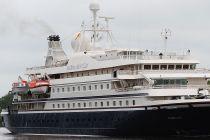
SeaDream Cruises launches 2025 Caribbean, Mediterranean, Scandinavia/Northern Europe itineraries
SeaDream Yacht Club announced the opening of 2025 Caribbean, Mediterranean, Scandinavia & Northern Europe cruises on its newly renovated, 56...
January 23, 2023 - Cruise Industry

Port Stockholm (Sweden) receives green light for EU grant funding application
Ports of Stockholm (Sweden) can jointly apply, together with 8 other Baltic Sea ports, for EU grant funding for pilot studies in order to develop the...
January 18, 2023 - show more news
